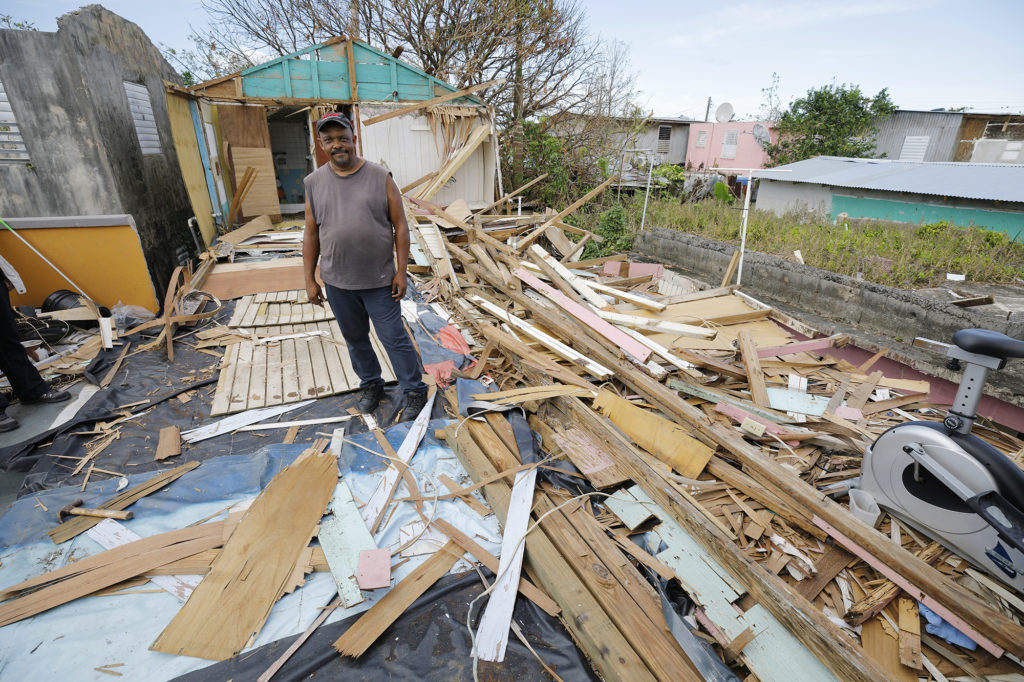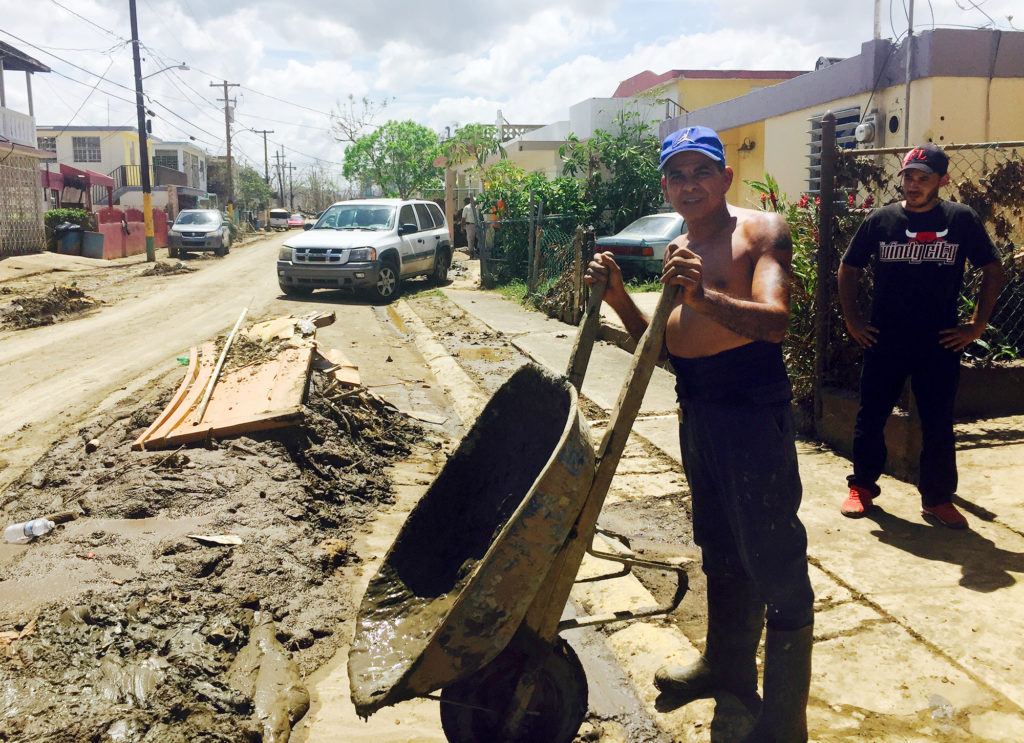Help Mercy Corps in Puerto Rico
Important link first: We are raising money for Mercy Corps’ efforts in Puerto Rico, so please donate. Everything we raise is going to Mercy Corps (minus only payment processing fees, which you can elect to cover if you like).
But you’re here for the story…
At the end of September, Hurricane Maria hit the island of Puerto Rico, destroying everything. People lost their homes, hospitals were damaged, and all utilities were cut off–water, electricity, banking, and even major roadways that were used to ship food. Mercy Corps stepped in to help, and we’re starting to get some stories back from their team on the ground.
 October 4, 2017 – San Juan, Puerto Rico. Rafael Lozada Ortiz (49), above, stands amidst the destroyed second floor of his badly-damaged home in the community of Las Mojas after Hurricane Maria raked the island. Ortiz, a mechanic, and his wife sheltered in the downstairs bathroom while the storm ripped off the second story and flooded the downstairs. (Photo by Jonathan Drake for Mercy Corps)
October 4, 2017 – San Juan, Puerto Rico. Rafael Lozada Ortiz (49), above, stands amidst the destroyed second floor of his badly-damaged home in the community of Las Mojas after Hurricane Maria raked the island. Ortiz, a mechanic, and his wife sheltered in the downstairs bathroom while the storm ripped off the second story and flooded the downstairs. (Photo by Jonathan Drake for Mercy Corps)
“People are still shoveling mud and debris out of their houses and waiting for electricity and water to be restored,” said Javier Alvarez, Director of Strategic Response and Global Emergencies for Mercy Corps. “From all the trees fallen you can see immediately the area was hard hit. As you leave San Juan, you see hills upon hills of trees stripped of their branches. Even palm trees, which are normally so flexible, didn’t survive. That’s a clear sign of a terribly strong storm.”
Mercy Corps is doing a cash distribution to help people with their immediate needs. It’s not a new relief method, but it’s gained a lot of momentum lately as a recovery strategy in the wake of a disaster. In 2016, the UN Secretary General called for cash distribution to be the default method of support for crisis-affected people when the situation allows, as it does currently in Puerto Rico. We talked with Mercy Corps, and here’s how it works:
● “Cash distribution” isn’t just handing out cash, but it is a direct way of putting support into the hands of people who need it, in the most effective and sustainable way. One of the many advantages of this practice is that it can be adapted depending on the needs of the people and situation. Some examples include distribution of paper vouchers, mobile money transfers, or pre-paid debit cards that can be used to withdraw cash around the world. Cash is efficient, flexible, easier, and safer to deliver than handing out food or goods. And because it is more cost-effective, it also saves donors’ and taxpayers’ money.
● Everyone who receives cash must be registered and will go through monitoring activities. Sometimes cash will be provided according to how vulnerable a person or family is, and the amounts will be adjusted according to individual or family size. Each program builds in monitoring and post-distribution monitoring activities. With electronic cash for example, we can track people’s spending habits to monitor what they are using the money for and how we can improve the support we are providing.
● Mercy Corps is a leader in cash-based aid distribution, with over a decade of experience implementing this type of programming in over 30 countries. Cash-based programming is an integrated and essential part of their overall approach to disaster recovery and increasing community resilience, where it is possible and markets are functioning. In partnership with communities, local government, and civil society groups, Mercy Corps has distributed over $275 million dollars in cash and voucher aid.
Basically, it’s a cost-effective way to help people get back on their feet while keeping them independent.
 Julio’s house was full of mud & water. He still has no power or water and is working to clear out debris. (Christy Delafield for Mercy Corps)
Julio’s house was full of mud & water. He still has no power or water and is working to clear out debris. (Christy Delafield for Mercy Corps)
The cash distribution program can help Julio get the materials he needs to repair his house, buy groceries and bottled water, and keep working. For Rafael (top photo) and his wife, it means they can concentrate on rebuilding their home instead of worrying about where the money will come from to do so.
We like that Mercy Corps has a solid plan for implementation and follow through. Their teams are also helping local organizations organize and plan, since the local organizations know what they have to do. The idea is to be there with extra hands without getting in the way. They will be focusing on outlying areas that were difficult to get to even before the storm, since people living there are already at a disadvantage.
We will have more updates on Mercy Corps’ efforts in Puerto Rico as we get them. If you’d like to help out, our donation page is set up here, and we’re very grateful for Mercy Corps sending us reports and photos from their team. They’re a wonderful bunch of brilliant people.
